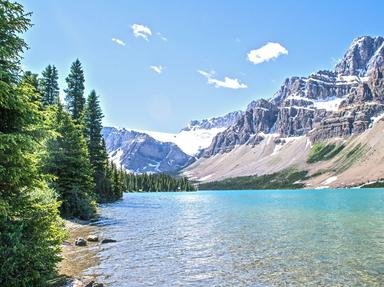Quiz Answer Key and Fun Facts
1. Crossing the border from the United States north of Omak, WA, the first town you will encounter in BC is named Osoyoos, which comes from the Syilx'tsn word "sw̓iw̓s," and translates as what?
2. On Hwy 3 just west of Osoyoos is the intriguing Spotted Lake, which gains its various coloured spots by what means?
3. The town of Okanagan Falls is named for where the waters of Skaha Lake empty into the Okanagan River. The actual Okanagan Falls are the tallest waterfalls in the Okanagan Valley.
4. Heading north towards the city of Penticton, you should take the turnoff that will bring you to the Dominion Radio Astrophysical Observatory research facility. The unique radio telescope array pictured here is called CHIME, which stands for what?
5. Continuing your northward journey on Hwy 97, you come to the city of Penticton, nestled between Skaha Lake and Okanagan Lake. Coming from the nsyilxcən Interior Salish word 'snpintktn,' what does 'penticton' mean?
6. The Kettle Valley Railway was constructed between 1910 and 1916 to provide a "Coast-to-Kootenay" connection to the main Canadian Pacific Rail line. How much of the original 500 km rail system has been preserved as a heritage site with a restored 1912 steam train that you can ride?
7. At roughly the middle point of the long Okanagan Lake is the only bridge crossing, between Kelowna and West Kelowna. For whom was the William R. Bennett Bridge named?
8. Immortalized as a statue in downtown Kelowna, what is the name of the lake monster that is said to inhabit the waters of Okanagan Lake?
9. About 175 km north of the border (and 50 km north of Kelowna) along Hwy 97 you reach the city of Vernon, BC. It lies nestled between three lakes, and is the hub of the North Okanagan region. Which of these is NOT one of the lakes touching Vernon?
10. Approximately 225 km north of the US border by Osoyoos, we come to the northern terminus of the Okanagan Valley at the town of Grindrod. It also marks the northwestern edge of which river's drainage basin?
Source: Author
reedy
This quiz was reviewed by FunTrivia editor
agony before going online.
Any errors found in FunTrivia content are routinely corrected through our feedback system.
